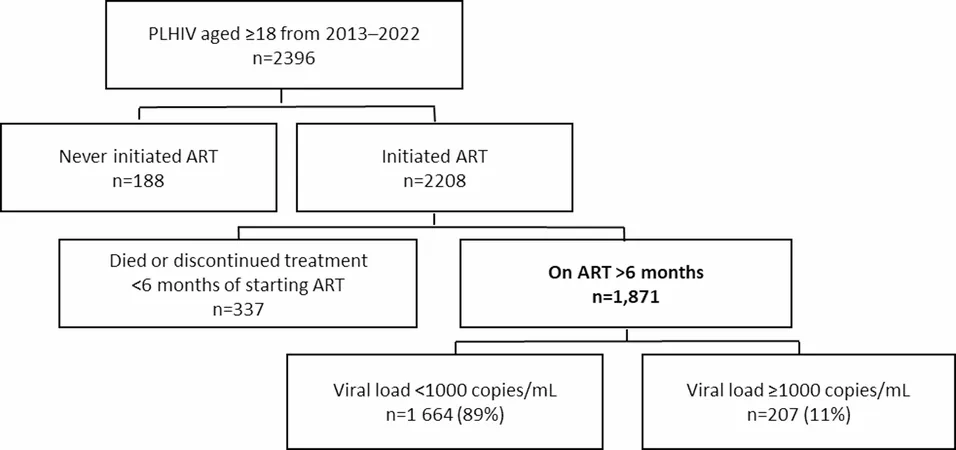
Unmasking HIV Challenges: Why Viral Load Suppression in Tajikistan Falls Short
2025-07-07
Author: Benjamin
A Bold Call for Action Against HIV Transmission
Viral load suppression is a game-changer in the global fight against HIV, aiming for 95% of those diagnosed to be receiving treatment and achieving undetectable viral levels. Yet, in the Sughd region of Tajikistan, the reality is stark: many are not meeting these critical targets in the battle against the virus.
What the Study Reveals: Alarming Statistics
A retrospective cohort study tracked 1,871 adults living with HIV who were on antiretroviral therapy (ART) between 2013 and 2022. The findings? A shocking 11% of participants had not achieved viral suppression, meaning the virus was still detectable in their systems. Among these individuals, 57% were male, and a significant number were migrants—a group that often faces unique barriers to effective healthcare.
Who's at Risk? Key Demographics in the Spotlight
The study revealed several risk factors linked to viral load non-suppression. Males—both migrants and non-migrants—were at a disproportionately higher risk than females. Other high-risk groups included those who were never married, individuals on ART for less than five years, and those on non-dolutegravir treatment regimens. It becomes clear that urgent intervention is needed to address these vulnerabilities.
The Broader Context: Global HIV Statistics
Despite advancements in HIV prevention and treatment, the world now sees nearly 40 million people living with HIV as of 2023. Shockingly, Tajikistan ranks low on the progress scale: only 67% of an estimated 15,000 individuals with HIV are receiving ART, and merely 62% are achieving viral suppression.
Navigating Barriers: Why Are They Struggling?
Migrant populations are particularly hard-hit by the HIV crisis. Socioeconomic instability leads many Tajiks to seek work abroad, but this creates challenges in accessing consistent healthcare. Barriers include stigma, fluctuating legal residency status, and socioeconomic constraints.
What Can Be Done? A Path Forward
To improve accessibility and encourage treatment adherence, local health authorities must implement targeted support systems, particularly for men and migrants. Educational initiatives, regular health screenings, and more inclusive healthcare practices could spell a dramatic turn toward better outcomes.
Conclusion: A Call for Urgency
The findings emphasize a critical need for enhanced strategies to expand access to HIV testing and treatment, especially for the most vulnerable groups. It’s time for decision-makers to act, ensuring that no one is left behind in the pursuit of viral load suppression that is essential for curtailing HIV transmissions and improving the quality of life for those living with HIV in Tajikistan.









 Brasil (PT)
Brasil (PT)
 Canada (EN)
Canada (EN)
 Chile (ES)
Chile (ES)
 Česko (CS)
Česko (CS)
 대한민국 (KO)
대한민국 (KO)
 España (ES)
España (ES)
 France (FR)
France (FR)
 Hong Kong (EN)
Hong Kong (EN)
 Italia (IT)
Italia (IT)
 日本 (JA)
日本 (JA)
 Magyarország (HU)
Magyarország (HU)
 Norge (NO)
Norge (NO)
 Polska (PL)
Polska (PL)
 Schweiz (DE)
Schweiz (DE)
 Singapore (EN)
Singapore (EN)
 Sverige (SV)
Sverige (SV)
 Suomi (FI)
Suomi (FI)
 Türkiye (TR)
Türkiye (TR)
 الإمارات العربية المتحدة (AR)
الإمارات العربية المتحدة (AR)